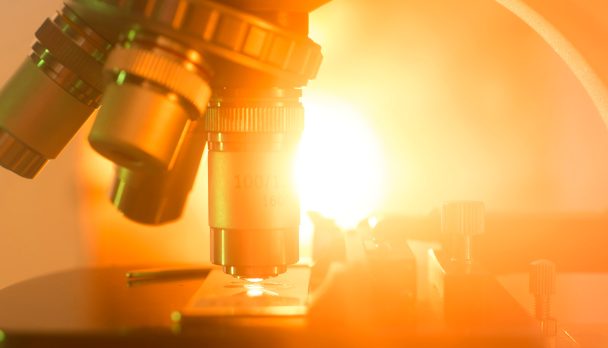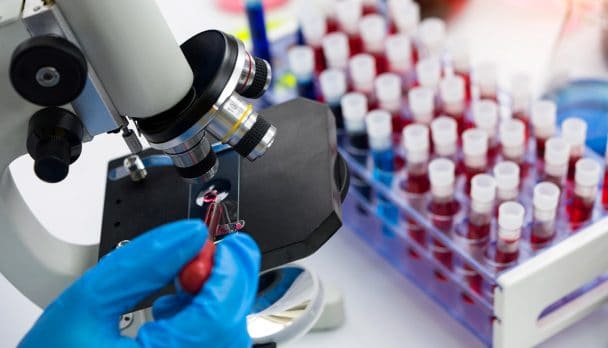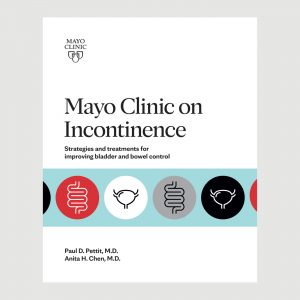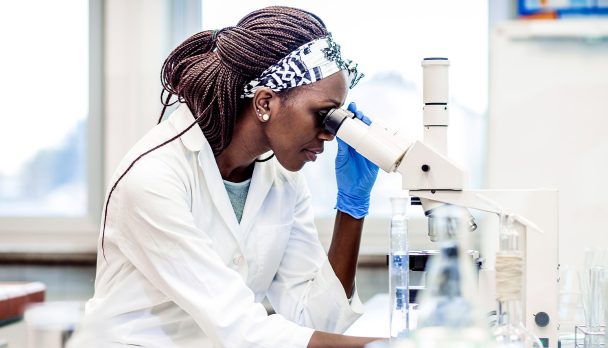
“In “The Body’s Keepers,” Dr. Paul Kimmel presents a compelling exploration of the kidney, unraveling its intricate role as the regulator and metronome of the human body’s delicate equilibrium. With a meticulous examination of the kidney’s daily task of purifying the body from various toxins, Kimmel guides readers through the scientific, medical, and health evolution linked to our understanding of this extraordinary organ. Delving into the history of kidney disease, dialysis, and transplantation, the renowned nephrologist sheds light on the advancements in treatments and technologies that have transformed the care of patients facing kidney ailments.
Beyond the medical narrative, Kimmel exposes the harsh realities of inequities within America’s healthcare system, unveiling stories of exploitation and injustices. Through case studies, personal histories, and firsthand accounts, the book uncovers the shocking truth about the consequences of disparate access to care and the medical industry’s profit-driven practices.”
If you developed a rapidly progressive kidney disease in the U.S. in the 1950s, and your kidneys failed, no option was available except death.
In 1960, if you became ill with uremia, you might have survived if you lived in Seattle, Washington, although the odds would be against you. You might have had a better chance at life if you were a White man, had a job, and were young.
By 1974, however, if you lived anywhere in the U.S. and had worked long enough to contribute some payments to the Social Security system and your kidneys failed, your life could be saved by treatment with dialysis for the newly designated illness end-stage renal disease (ESRD). (Although, if you were older than sixty-five or had diabetes, there was some concern that the program might not be for you, and your participation might be discouraged.) You even had a chance to receive a kidney transplant, paid for by the U.S. ESRD program. Your chances of receiving a kidney were higher if you were young and you were White.
The birth of the U.S. ESRD program is the story of many people. The tale involves life and death decisions, pathbreaking medical advances and experiments, ethical issues, political considerations, economic concerns, and legislative horse-trading. The effort had a complex genesis and an intricate set of actors from different backgrounds who did not always work together but ultimately shared common goals. The establishment of the program involved patients, members of a new subspecialty called nephrologists, surgeons, engineers, nurses, social workers, psychologists and psychiatrists, philanthropists, journalists, politicians, and patients.
The work required first and foremost patients and lastly and most importantly patients.
Since this medical crusade began more than a half-century ago, most of the people involved in this story have died. But their efforts have had tremendous ramifications for the hundreds of thousands of people whose lives have been saved by the ESRD program and the more than 800,000 patients currently treated with dialysis or who have received a kidney transplant, according to the most recent statistics. Dr. Richard Rettig pointed out that at least four leaders should be highlighted in recounting the history of federal coverage of the treatment of people with uremia: Drs. Willem Kolff, John Merrill, Belding Scribner, and George Schreiner.
Early Experience with Dialysis
The Scottish chemist Thomas Graham (1805–1869) coined the term dialysis in 1861 to describe the movement of colloids and crystalloids across a semipermeable membrane. Abel, Rowntree, and Turner in Baltimore about a half-century later reported in the Transactions of the Association of American Physicians (1913) and the Journal of Pharmacology (1914) on the use of these techniques, including the application of hirudin, a substance that prevented blood clotting in live dogs, to demonstrate the feasibility of dialysis in living animals. To be useful to treat uremia in humans, the condition where retained toxins circulating in the bloodstream would eventually cause death, the procedure required (1) access to a patient’s bloodstream, (2) a safe and effective anticoagulant (or blood thinner, as it is called colloquially), (3) a safe and efficient dialysis semipermeable membrane to allow wastes to flow out of the blood and be discarded, and (4) a pump to facilitate blood flow through the circuit. For patients with acute but reversible losses of kidney function, the system might be used for a week or two. For patients with chronic irreversible kidney disease, the system would have to last a lifetime.
Dr. Georg Haas (1886–1971) first treated humans with uremia with dialysis in 1924 in Germany, using the newly available anticoagulant drug heparin. However, faced with challenges and disappointing results, he gave up his work in 1928. It was left to Dr. Willem Kolff to move the field forward, amid warfare, through 1945. During World War II in the Netherlands, Kolff developed a rotating drum device, really a large container, using a cellophane membrane (made from the material used to create sausage casings) and a solution termed dialysate that would facilitate the diffusion of toxins and waste products from the patient’s bloodstream into the device for disposal according to the principles laid out by Graham. After many attempts that culminated in the deaths of many patients, one of his patients, an elderly woman with kidney failure in the face of an overwhelming infection, recovered from acute renal failure after dialysis using Kolff’s device. Kolff, still in his early thirties, reported his work and the survival of his first patient in 1944. Although many of the patients he had treated before this successful attempt had died, this single instance of survival was taken as proof that dialysis was a lifesaving procedure for patients with acute renal failure. The challenge remained to translate this heroic advance into clinical practice and build a system that could be used in day-to-day patient care in hospitals across the globe.
Kolff’s dialysis machine design was modified and used to treat patients with acute renal failure by American physicians before and during the Korean War. A Kolff device was given to Mount Sinai Hospital in New York and used in the care of patients with acute renal failure. Physicians at the Peter Bent Brigham Hospital in Boston also adapted the Kolff design from blueprints Kolff provided to its physician-in-chief Dr. George Thorn. The new, modified machine was known as the Kolff-Brigham artificial kidney. The Kolff-Brigham artificial kidney was made available to other hospitals between 1954 and 1962.
Dr. Nils Alwall, a Swedish physician, as early as the late 1940s became interested in the treatment of uremia by dialysis. In 1947, he described a “dialyzer” that could perform the twin functions of removing waste and excess fluid from patients, more efficiently than Kolff’s rotating drum.4 This dialyzer placed cellophane membranes in a more compact device that could accommodate a blood pump.
Scribner and the Start of Chronic Dialysis in Seattle
Belding Hibbard Scribner was born in 1921 in Chicago. Scribner graduated from the University of California, Berkeley, in 1941 and received his medical degree from Stanford in 1945. One of his teachers there was Thomas Addis, a nephrologist who pioneered the treatment of kidney disease with diet and had an interest in quantifying metabolism in chronic glomerular diseases of the kidney. Scribner pursued postgraduate studies at the Mayo Clinic and obtained a master’s degree from the University of Minnesota in 1951. He started on the faculty of the University of Washington (UW) School of Medicine in 1951 and by 1958 was the chief of kidney diseases at UW, a position he retained until 1982.
Scribner became interested in dialysis after listening to a lecture by Dr. John Merrill of Harvard’s Peter Bent Brigham Hospital given at the Mayo Clinic in 1950. Merrill, an early expert in acute renal failure and the new dialysis therapy described the use of the Kolff-Brigham artificial kidney in the care of patients with kidney failure.
Scribner understood that the overwhelming obstacle in delivering dialysis to patients with the more common, chronic form of kidney disease over a long period of time was obtaining repeated access to the circulation. Typically, the cannulation of blood vessels quickly scarred them, preventing their further use for dialysis, and rendering ongoing care impossible. The treatment of the patient over an extended period of time, therefore, was a clinical improbability. Pondering this seemingly insoluble issue for weeks, he woke from sleep in the middle of the night with the answer to the problem.
Scribner conceived of a plastic cannula that could be connected and disconnected and accessed by tubing linked to a dialysis machine that would be surgically implanted between an artery and a vein, remaining on the outside of the body when not in use. Scribner consulted with Loren Winterschied, a surgeon at UW. Winterschied suggested the use of Teflon, which had been newly developed, as a material for the tubing. Teflon had already been shown in other studies to resist the propensity to blood clotting. Working with the engineer Wayne Quinton, in 1961, they devised a Teflon tube that formed an arteriovenous shunt, connecting the radial artery in the wrist to a vein in the forearm.5
On March 9, 1960, Clyde Shields, a patient of Scribner’s, became the first person to have a shunt surgically created for use to enable chronic dialysis. Shields was thirty-nine years old, was employed, and had chronic glomerulonephritis, a disease resulting from the inflammation and subsequent destruction of the filtering portions of the kidneys. In advanced stages, the disease was uniformly fatal. Dr. David Dillard performed the operation. Shields became the first patient to be treated in what would become Seattle’s Artificial Kidney Center. His ongoing survival could be taken either as a miracle or a revolution in medical technology and care.
A National News Story about the Seattle Artificial Kidney Center
A little less than two years later, in November 1962, Shana Alexander wrote about the Seattle dialysis program in the popular weekly Life magazine. She reported the case of John Myers, who had known he had kidney disease since his army discharge in 1945 but didn’t have symptoms until 1960. At that time, working as a businessman, he began to notice headaches, with increased blood pressure. At age thirty-seven, he could barely go to work. In December 1961, he became acutely ill with a severe headache, cough, nausea, and swelling of his legs. His kidney disease had progressed to the stage of uremia. He was accepted as a patient at the Seattle dialysis program. Twice a week, Myers traveled the forty miles from Bremerton by ferryboat across Puget Sound to Seattle. He was dialyzed in the evening in an annex of the Swedish Hospital. Alexander wrote that there was a “small, U-shaped plastic tube sutured into the blood vessels of his left forearm.”
Alexander, somewhat dismissively, called the kidney “relatively simple in function”, “really only a “filter.” To a nephrologist, this characterization is infuriating. How manifold are the functions of the normal organ is made clear as the author went on to describe the machine and procedures designed to attempt to replace the performance of the human kidney.
The article portrayed the dialysis apparatus as a “washing machine.” Alex- ander depicted the procedure, including the connection of the shunt to the machine tubing, the flow of blood from the artificial shunt, through the tubing, into the dialysis machine, and then back into Myers’s arm. Myers’s dialysis treatment took ten to twelve hours a session. The procedure was reported to be “painless.”
Alexander explained that, at that time, approximately 100,000 patients a year developed uremia and died of kidney disease in the U.S. She noted there were five patients cared for at Swedish Hospital with end-stage renal disease. One of those patients was Clyde Shields. At that time, the program was scheduled to scale up to ten patients a year. The cost of dialysis in the program was, according to her sources, about $15,000 a year per patient. (The median family income in the U.S. in 1962 was about $6,000 a year.)
Alexander went on to recount the hard choices that had to be made at the start of this experimental medical program. Only one patient out of the fifty who needed treatment could be accommodated by the Seattle program. Alexander emphasized that Myers had not been chosen to receive the treatment by chance or by physicians but by a committee. She outlined the procedures of the Admissions and Policies Committee of the Seattle Artificial Kidney Center at Swedish Hospital, which consisted of seven people. They had been appointed by the King County Medical Society and had served anonymously and without pay. Alexander called the seven members a “Life or Death Committee.” The committee met for the first time in the summer of 1961. Members included “a lawyer, a minister, a banker, a housewife, an official of state government, a labor leader, and a surgeon.”
Physicians who briefed committee members suggested that patients over the age of forty-five and children should not be accepted because their treatment might be fraught with obstacles. It was thought that their care would be simply too difficult.
Committee members decided to keep their identities anonymous. They also requested keeping the names of the potential treatment candidates unknown. Committee members created a list of factors they would use in making decisions. Some of these items included patients’ age and sex, their marital status and number of dependents, their income and net worth, their emotional status, educational background, and “future potential.” The committee also thought that references for the candidates from friends, acquaintances, and associates could be useful to inform choices. They agreed to limit candidacy for dialysis therapy to residents of the state of Washington. A key rationale was that the shunt had been developed at the UW School of Medicine and its university hospital using state tax revenues. A principle, however, was established. In life and death decisions, where medical resources are limited, nonmedical personnel should play crucial roles in their ethical allocation. Currently, opinions from nonphysicians are sought by institutional review boards and, more recently, regarding the conduct of some clinical studies supported by the federal government.
Alexander presented a typical set of deliberations undertaken by the committee and also provided a brief interview with each of the committee members, focusing on their backgrounds, perspectives, and the way each viewed the choices he or she made. She related that at a meeting, five candidates were considered for two places newly available for dialysis treatment in the Center. The Kidney Center at that time contained only three beds to accommodate all the patients with uremia from the state of Washington.
Alexander described Scribner’s original conception of the shunt. She outlined the development of the shunt, starting in 1960, from Scribner’s early morning epiphany to its realization as a medical device two weeks later. The first patient who had a shunt inserted was described as suffering from “Bright’s disease.” That patient, Clyde Shields, a forty-two-year-old machinist, was alive two years later when Alexander wrote the article. Patients underwent many shunt insertions during the course of more than two years as they wore out, clotted, or became infected.
Scribner’s experimental program, including the selection committee, was funded by a $250,000 research grant from the John Hartford Foundation. Start-up funds were also supplied by the University of Washington.
Alexander ended the article by reviewing the ethical issues faced by the committee. “Who really is the more suitable patient under the present committee rules—the man who, if he is permitted to continue living, can make the greatest contribution to society; or the man who by dying would leave behind the greatest burden on society?” Alexander did not comment on the possible dialysis of women.
The article in essence set forth the ethical choices involved in the clash of incremental, practical responses with the development of a new, expensive lifesaving technology for a uniformly fatal disease when resources were scarce, not solely because of the lack of funds. The agonized emotions of the members of the committee, who were making existential choices, can be understood by anyone who had served on a jury or who had had to make a difficult decision that might affect someone’s life. The story, however, served to place kidney disease and its treatment front and center in the national consciousness. A decade later, the ethical conundrum would be faced by the country’s leadership as it considered patients who might be poor, unmarried, childless, unemployed, or of minority status. These choices involved, unwittingly, those who may not have made great contributions to society (subjectively determined) but who wanted to live. In 1962, a seed had been planted.

Relevant reading
Mayo Clinic on Prostate Health, 3rd Edition
Mayo Clinic on Prostate Health, 3rd Edition is an easy-to-read yet comprehensive guide to preventing, understanding, treating and living with prostate disease. Advances in research, an explosion in sophisticated imaging technology and new medical procedures have allowed for earlier diagnosis of prostate disease and more personalized treatment.




















